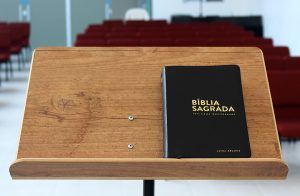In the Gospels,
there are accounts of Jesus healing blind men that appear to have similarities but also differences in detail:
- 1. **Matthew 20:29-34:**
– Matthew records that Jesus healed two blind men as he was leaving Jericho. These men cried out to Jesus for mercy, and Jesus touched their eyes, restoring their sight due to their faith. - 2. **Mark 10:46-52:**
– Mark focuses on the healing of Bartimaeus, a blind beggar sitting by the roadside near Jericho. When Bartimaeus heard that Jesus was passing by, he cried out loudly for Jesus to have mercy on him. Jesus responded, called him forward, and Bartimaeus received his sight after declaring his faith in Jesus. - 3. **Luke 18:35-43:**
– Luke also mentions a blind beggar near Jericho who called out to Jesus as he passed by. Jesus asked him what he wanted, and the man requested his sight. Jesus healed him, saying his faith had made him well. - **Harmonizing the Accounts:**
- – **Possibility of Two Healings:** It’s possible that there were two separate instances of Jesus healing blind men near Jericho, as suggested by Matthew. These healings may have occurred at different times or involved different individuals.
- – **Focus on Bartimaeus:** Mark and Luke may be focusing specifically on Bartimaeus, perhaps because of his notable faith and persistence in calling out to Jesus despite being told to be quiet by others. Bartimaeus’s healing is described in detail to emphasize the importance of faith and Jesus’ compassion.
- In summary, while Matthew mentions two blind men healed by Jesus near Jericho, Mark and Luke highlight the specific account of Bartimaeus, a blind beggar whose healing demonstrated Jesus’ power and the importance of faith. These variations in detail do not necessarily indicate contradictions but rather highlight different aspects of the same event or related events.
The accounts of Jesus healing blind men, as recorded in Matthew 20:29-34, Mark 10:46-52, and Luke 18:35-43, offer rich insights into His ministry and interactions with individuals. Here’s a deeper exploration:
### Matthew 20:29-34
Matthew’s Gospel mentions two blind men sitting by the roadside as Jesus was leaving Jericho. The key points include:
– **Cry for Mercy:** The blind men cry out to Jesus, addressing Him as “Son of David,” a Messianic title indicating recognition of His authority and ability to heal.
– **Compassionate Response:** Jesus stops and asks them what they want Him to do for them, demonstrating His willingness to respond to faith-filled pleas for help.
– **Healing:** Moved by their faith, Jesus touches their eyes and immediately they regain their sight. This underscores the power of Jesus to heal and His responsiveness to those who seek Him in faith.
### Mark 10:46-52
Mark’s account focuses on Bartimaeus, a blind beggar mentioned by name:
– **Persistence in Faith:** Bartimaeus hears Jesus passing by and calls out loudly for mercy. Despite being told to be quiet by the crowd, he persists in calling out to Jesus, addressing Him as “Son of David.”
– **Personal Interaction:** Jesus stops and calls Bartimaeus to Him, asking him directly what he wants. Bartimaeus requests his sight, showing his faith in Jesus’ ability to heal.
– **Immediate Healing:** Jesus commends Bartimaeus for his faith and tells him that his faith has healed him. Bartimaeus receives his sight immediately and follows Jesus on the way, becoming a disciple.
### Luke 18:35-43
Luke’s narrative also focuses on a blind beggar near Jericho:
– **Desperate Plea:** The blind man calls out to Jesus as He approaches Jericho, using the same Messianic title, “Son of David.”
– **Jesus’ Response:** Jesus stops and asks the man what he wants. The man requests his sight, demonstrating his faith in Jesus’ ability to heal.
– **Healing and Response:** Jesus tells him that his faith has healed him, and immediately the man receives his sight. He glorifies God, and the people around also praise God for the miracle.
### Harmonizing the Accounts
These accounts share common elements but also offer unique perspectives and details. The differences can be harmonized by considering:
– **Multiple Instances:** It’s possible that Jesus healed blind men on multiple occasions near Jericho, as Matthew mentions two blind men while Mark and Luke focus on one.
– **Details for Emphasis:** Each Gospel writer emphasizes different aspects of the healing—Matthew highlights Jesus’ power and the response of the blind men, Mark emphasizes Bartimaeus’s persistence and faith, and Luke underscores the immediate response to faith and praise.
### Spiritual Insights
– **Faith and Healing:** All three accounts highlight the importance of faith in receiving healing from Jesus. The blind men or man’s faith in Jesus as the Messiah plays a crucial role in their healing.
– **Compassion of Jesus:** Jesus’ compassion is evident in His response to the cries for mercy and His willingness to stop and heal those who call upon Him in faith.
– **Response of Gratitude:** Those healed respond with praise and glorify God, illustrating the transformation that comes from encountering Jesus.
In conclusion, while there are variations in the details of these healing accounts, they collectively portray Jesus as the compassionate healer who responds to faith, demonstrating His divine authority and inviting all to seek Him for






















One Response